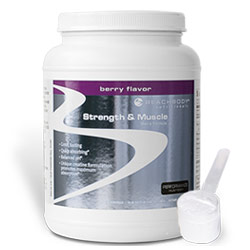Creatine
May 11, 2011 –
When I first started P90x, the only supplement I had ever taken was a multivitamin. The use of supplements was completely foreign to me. Are these drugs? Are they safe? What do i use them for? I would look inside a GNC and have no clue what any of this stuff was. I will be touching on many supplements in upcoming blogs.
Today’s supplement is Creatine. I have heard about creatine for years as I had friends who used it, but had no concept of what it was. I hope this blog helps answer many of the same questions I had. I also attached some great articles from Men’s Health.
What is Creatine?
Here is the official take from Wikipedia.
Creatine is a nitrogenous organic acid that occurs naturally in vertebrates and helps to supply energy to all cells in the body, primarily muscle, by increasing the formation of Adenosine triphosphate (ATP).
Creatine is naturally produced in the human body from amino acids primarily in the kidney and liver. It is transported in the blood for use by muscles. Approximately 95% of the human body’s total creatine is located in skeletal muscle.
Creatine is not an essential nutrient, as it is manufactured in the human body from L-arginine, glycine, and L-methionine
In humans and animals, approximately half of stored creatine originates from food (mainly from meat). Since vegetables do not contain creatine, vegetarians show lower levels of muscle creatine, but show the same levels after using supplements.
Why supplement with Creatine?
If creatine is a naturally occurring amino acid (protein building block) that’s found in meat and fish and is also made by the human body in the liver and kidneys, why do we need to supplement?. Fundamentally, the formation of ATP from creatine phosphate is a major source of energy within the human body. If my muscles have more energy, I can do more reps, lift more weight, jump a little higher, etc. However, to increase the amount of ATP formulated, I need to increase the amount of creatine in my body. Although we could get it from things like red meat and fish, a half of a pound of raw meat provides ~1g of creatine. So it is healthier (and more efficient) to just take it in the form of a supplement.
What dosage should I take and when should I take it?
On average, the recommended dosage is 5g. Some people who are above average in size, take 10g. Personally, I take 5g in the morning along with my P90x Results and Recovery Formula. (By the way R&R has a 0.5g of creatine in 2 scoops.) You should try and not eat anything for ~30 minutes after you take it for maximum absorption.
How do I consume it?
 The most effect form is in a powder and there are alot of varieties out there. I use Beachbody Strength & Muscle which they claim is 4x more absorbable than regular creatine. I have used this for well over a year and have no issues. It has a Berry tasting flavor. I mix it with about 4oz of water. If you buy regular creatine, many articles suggest you take it with juice for better absorption. However, many others just add it to their protein shakes.
The most effect form is in a powder and there are alot of varieties out there. I use Beachbody Strength & Muscle which they claim is 4x more absorbable than regular creatine. I have used this for well over a year and have no issues. It has a Berry tasting flavor. I mix it with about 4oz of water. If you buy regular creatine, many articles suggest you take it with juice for better absorption. However, many others just add it to their protein shakes.
It is also important to ensure you are consuming a healthy dose of water during the day since.
What about loading?
There are numerous articles that state you should have a loading phase for one week. During this phase, you would consume 5g 4x a day for a daily dosage of 20g. After the week is over, you would go back to the maintenance dose of 5g daily. I have played around with this and not seen much difference. I am sure different people react differently to it. However, make sure that if you are doing a loading dose, you only do it for one week.
What about cycling?
If there is one supplement that has had a ton of research performed on it, it is creatine. In fact, the second article below is some very recent research. However, some suggest that you cycle creatine. You go on for two months and off for one. Why? The philosophy is that your body may get too used to it and hence stop getting the full benefits. Our bodies adapt and allowing one month off ensures that when we start using it again, the body gets the maximum benefit. There are many out there who dont cycle at all and have seen no issues. I am more conservative and cycle.
Is it safe? What are some side effects?
As I said above, creatine is one of the most researched supplements out there. The conclusion? For an average healthy adult, it is perfectly safe. This is why Americans spend $14M a year on the supplement.
Initial Weight Gain is an typical side effect. Creatine helps your muscles retain fluid so essentially the initial gain is water weight. Others have reported muscle cramping, but the reported side effects are very small. If you have any doubts or concerns about taking creatine, always consult your physician.
Other Sources of Information
There is a ton of information on creatine out there. Outside of the two artciles below, another great source is HERE at http://www.creatinemonohydrate.net/. There is some great information there and they have expanded answers to many of the questions above.As always, you can feel free to contact me as well.
Men’s Health
Creatine: Side Effects, What It Is, What It Does
Why is creatine such a big deal? What are the side effects? Risks? Men’s Health answers your creatine questions and helps you decide if it’s the supplement for you
Want to get bigger and stronger—and get that way faster?
Creatine works. Lifters know this, professors know this, the marketers who sell the stuff know this.
But nobody should put anything in their body without weighing the benefits and risks first. That goes for everything from beer to marshmallows to the amazing amino acid called creatine.
It’s not anything scary. It’s not a Barry Bonds starter kit.
Creatine—typically bought in flavored powders and mixed with liquid—increases the body’s ability to produce energy rapidly. With more energy, you can train harder and more often, producing faster results.
It’s as simple as this: “If you can lift one or two more reps or 5 more pounds, your muscles will get bigger and stronger,” says Chad Kerksick, Ph.D., assistant professor of exercise physiology at the University of Oklahoma.
Research shows that creatine is most effective in high-intensity training and explosive activities. This includes weight training and sports that require short bursts of effort, such as sprinting, football, and baseball.
There is less support to indicate that creatine improves endurance performance and aerobic-type exercise.
One thing is almost certain: If you take creatine, you’ll gain weight.
It’ll happen quickly, says Paul Greenhaff, Ph.D., professor of muscle metabolism at the University of Nottingham in England. While the initial gain is water (about 2 to 4 pounds in the first week of supplementation), subsequent gains are muscle due to the increase in the workload you can handle.
Because creatine is an “osmotically active substance,” it pulls water into your muscle cells, which increases protein synthesis, Kerksick says.
Studies in the journal Medicine & Science in Sports & Exercise found that muscle fibers grow when a person takes creatine.
The catch: This only happens if you take advantage of the boost in energy and hit the gym. Otherwise, it is just water weight.
Nobody argues with any of this. But there are some questions about creatine that lots of guys have.
Any guy mixing his first glass of creatine powder has hesitated. Is this the right move? His questions include:
Will creatine mess with my kidneys?
Researchers are constantly studying creatine—for effectiveness and safety. That’s why many trainers and health experts support the use of creatine: Studies indicate it’s safe.
“Creatine is one of the most-researched sports supplements out there,” Kerksick says. “And there’s no published literature to suggest it’s unsafe.”
Greenhaff has been studying creatine for about two decades, and says he never encounters the cramping that is sometimes reported. “I’m not saying people don’t experience cramps, but I don’t believe it can be very common,” he says. “If there were any major adverse side effects, we would have seen them by now.”
But there have been anecdotal reports of kidney damage, heart problems, muscle cramps and pulls, dehydration, and diarrhea, in addition to other negative side effects. The key word here: anecdotal.
Some of these conditions can be caused by consuming too much of certain vitamins, says Tod Cooperman, M.D., president of ConsumerLab.com. “Too much vitamin C can cause diarrhea, and too much iron may lead to stomach problems,” he says.
To be safe, he recommends using creatine only if you are healthy and have no kidney problems. That’s because your kidneys excrete creatinine, a breakdown product of creatine.
So there’s no downside?
Not so fast, Biceps-Brain. If you can get big without it, there’s no reason to use creatine.
“I feel it would be better for no one to use creatine even though it’s shown to increase some strength and muscle mass,” says Jim King, M.D., president of the American Academy of Family Physicians.
“I wouldn’t recommend doing anything that would show minimal improvement and possible risk. Weigh the negatives and the benefits before you try it.”
Kids under age 18 should avoid creatine, King says, because few studies have been done on children using creatine as an exercise enhancement.
There have been reports of overexertion causing torn muscles. That can mean permanent damage. “Children are still in a growing phase, and we’re not sure what impact creatine may have on muscles and bones as they grow,” he says. “I feel very strongly that middle and even high schoolers shouldn’t use it.”
Will it transform me?
Here’s one thing all the experts can agree on: It’s impossible to say.
Creatine has different effects on every individual. Some people just don’t respond to creatine—it’s a genetic thing.
You should know in about a week—if your training volume increases, it’s working for you. If not, you’re probably a “nonresponder”—taking the powder isn’t going to help you.
Diet is important. Meat, especially herring and beef, has high levels of creatine, so vegetarians usually see a greater response, while those whose diets are highly carnivorous may see less change.
Of course, a healthy diet is key to anyone’s muscle-building plan. “If your diet is junk, there’s no point in adding creatine,” Kerksick says. “It’s better to eat good sources of carbohydrates and lean protein.”
In the end, creatine alone will not make you a bigger man.
“Only when combined with exercise does it improve the quality of training,” Greenhaff says. “You still have to do the work.”
What kind of creatine should I take?
Powder is the way to go. Studies show that liquid creatine and creatine ethyl ester (CEE) are unstable and break down in your blood system. Don’t bother with them.
Kerksick recommends 100-percent pure creatine powder. Some companies add electrolytes and other ingredients, but tests indicate those do little to improve performance.
“Save money and buy creatine powder and [mix it with] fruit juice,” Kerksick says.
Fruit juice? That’s right—the sugar in the juice raises insulin levels, which helps increase creatine uptake into the muscle.
You need about 70 grams of simple sugars for every five grams of creatine, Greenhaff says. He suggests looking for a drink or supplement with 60 grams of carbs per 100 grams of product.
To ensure your body maximizes the benefits of creatine, buy the best stuff you can afford. It’s your body—this isn’t the time to get cheap.
You’ll know the powder is of poor quality if it’s hard to dissolve and there’s residue at the bottom of your glass after you drink it. You want the powder in your muscles, not in the glass. If this happens, try a different brand.
You can also check ConsumerLab.com, which writes reviews on creatine products and other muscle supplements every 3 years.
http://www.menshealth.com/nutrition/creatine-side-effects-what-it-what-it-does
Men’s Health
The Secret Benefits of Creatine Revealed
By Mike Roussell, Ph.D., author and nutrition consultant
When it comes to building muscle, creatine enjoys a relatively rare distinction amongst “performance enhancing” supplements: It actually lives up to its hype. Indeed, a recent review of 22 studies found that, when used in conjunction with weight training, creatine can boost strength gains by up to 8 percent. But that’s not the only way it can do the body good. Here are five more reasons to add it to your fitness plan:
1) Make Up for Lost Sleep Creatine helps supply energy to every cell in the body, including those in the brain. Sleep deprivation, however, can cause the brain’s creatine stores to plummet, leading to mental fatigue—unless you replace them through supplementation. That’s what a team of British white coats found when they fed creatine to a group of rugby players 90 minutes before a match. Consider it a field test for real world results.
2) Combat Muscle Pain For all the life-saving benefits of statins, there’s at least one potential drawback: Muscle pain. Eighteen percent of statin users suffer from it, but taking just 5 grams of creatine a day can significantly ease the ache, according to a recent study at the Cleveland Clinic. The researchers suggest that supplementation can boost muscle creatine stores reduced by statins, which block the transport of the substance into cells, impairing energy production and triggering pain.
3) Turn Back the Clock Adding creatine to facial cream can improve the firmness of skin by boosting collagen production, according to German researchers. Don’t want to add it yourself? Pick up a bottle of Nivea for Men Protective Lotion (niveaformenusa.com). It contains both creatine and SPF 15 to both reverse the signs of aging and prevent UV rays from doing more damage.
4) Recover Faster Training hard is only half of the muscle-building equation. Adequate rest is the other. Ignore the latter half and you’ll quickly reach a training plateau—unless you supplement with creatine, according to researchers at the Human Performance Laboratory at the University of Connecticut. In their study, subjects who supplemented with 5 grams of creatine per day were able to pack on three pounds more muscle than those who didn’t—despite the fact that both groups trained beyond their capacity to recover. Bottom line: Creatine can help you train harder and more often, accelerating your gains.
5) Optimize a Vegetarian Diet In addition to producing it naturally, most men consume about two grams of creatine per day (mostly from fish and red meat). This puts vegetarians at a distinct disadvantage, albeit one that’s easily rectified, according to a new study in the British Journal of Nutrition. The researchers showed that vegetarians who supplemented with 20 grams of creatine per day for five days saw improvements in both memory and recall. Follow their lead. To derive the most benefit from creatine, take a “loading dose” of 20 grams per day for five days, and then cut back to a daily “maintenance dose” of five grams. You can boost its effectiveness even more by taking it in combination with carbohydrates, like those found in sports drinks, which trigger the production of insulin, a hormone that helps creatine enter cells.























If the only creatine you take is in the P90X R&R drink, would you still consider cycling? At 0.5 grams or 10% of the average recommended dosage, it seems that cycling wouldnt be necessary.
That’s right Dave. Its just a dash of creatine, so no need to cycle. Its when you get up into the 5g range that you need to consider it more
[…] Creatine (See my full Blog on Creatine […]
[…] Creatine […]